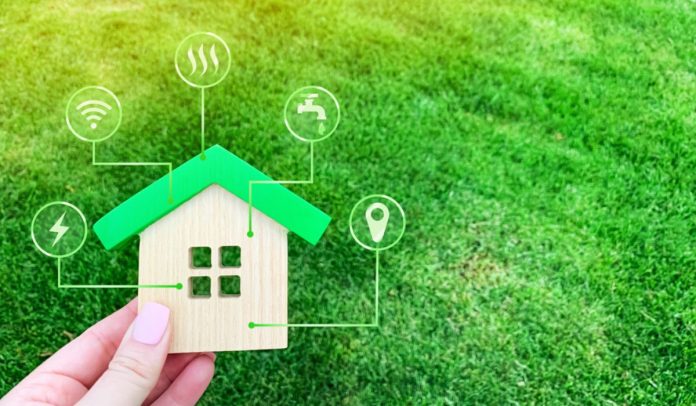People have become increasingly more conscious of the need to be environmentally friendly in all their lives. One area in particular that has gained significant attention in recent years is the construction industry. Building a green home with eco-friendly materials and techniques has become increasingly popular as we strive to reduce our carbon footprint and preserve the planet for future generations.
This blog will explore the benefits of building a green home and offer tips on incorporating sustainable building practices into your construction project. Whether you’re a homeowner, builder, or architect, this guide will provide valuable insights on creating a sustainable, energy-efficient, eco-friendly home.
Choosing the Right Materials
Sustainability in your home starts with your building process. A house-building company worldwide should be able to provide sustainable alternatives to traditional materials. Eco-friendly materials have many benefits, such as recycled materials, sustainable wood, and low-VOC paints.
Recycled materials help to reduce waste in landfills and decrease the need for new resources, making them a more environmentally responsible choice. Sustainable wood, sourced from responsibly managed forests, helps to protect biodiversity and ensures that our forests remain healthy and vibrant for generations to come.
Low-VOC paints, which contain fewer harmful chemicals, provide healthier indoor air quality for occupants and help to reduce the overall impact on the environment. By choosing these materials, you can positively impact the environment while creating a healthy and sustainable home for your family.
Energy Efficiency in Your Home
Sustainability can benefit both the planet and your wallet, and one of the best ways to achieve this is through energy-efficient home design. Incorporating passive solar design, energy-efficient appliances, and efficient lighting can significantly reduce energy consumption, resulting in lower utility bills and a smaller carbon footprint. Passive solar design involves orienting your home to maximize sunlight exposure and using materials that retain heat, which reduces the need for heating and cooling.
Energy-efficient appliances use less energy and can save you money in the long run. In comparison, efficient lighting solutions like LED bulbs consume less energy and last longer than traditional bulbs. By designing your home to be energy-efficient, you can reduce your impact on the environment and save money on your energy bills.
Heating and Cooling Your Home
The materials you use will greatly impact the efficiency of your heating and cooling needs, and this will depend greatly on the climate where you live. Fortunately, many energy-efficient options are available to help you stay comfortable throughout the year while reducing your carbon footprint.
Geothermal heating uses the Earth’s natural heat to warm your home, while solar panels can provide heating and cooling by converting sunlight into electricity. Efficient HVAC systems, such as those with programmable thermostats and high SEER ratings, can also help you save on energy costs while keeping your home comfortable. With so many options available, it’s important to research and choose the solution that best meets your needs and budget.
Water Conservation
Water conservation is a critical practice that has become increasingly important in recent years, especially as water scarcity is a growing concern worldwide. Fortunately, there are various water conservation techniques available that can help reduce water usage and waste. One such technique is low-flow toilets, designed to use significantly less water per flush than traditional toilets.
Rainwater harvesting is another effective method that involves collecting and storing rainwater for future use in irrigation, landscaping, or other non-potable uses. Additionally, greywater systems can recycle wastewater from sinks, showers, and washing machines for watering plants and flushing toilets. By implementing these water conservation techniques, individuals and communities can significantly impact preserving our planet’s valuable water resources.
Landscaping Techniques
Maintaining your garden with sustainability in mind means incorporating eco-friendly landscaping techniques that benefit the environment and enhance your property’s beauty. One of the most effective ways to achieve this is by using native plant species. Native plants are adapted to the local climate, requiring less water, fertiliser, and pesticides, making them more eco-friendly than exotic plants.
Another technique is the installation of a rain garden, which is designed to collect and absorb rainwater runoff from your roof, driveway, or other impervious surfaces. Rain gardens help to reduce soil erosion, filter pollutants, and create a habitat for beneficial insects and birds.
Finally, green roofs are an innovative technique that involves planting vegetation on the roof of your building. Green roofs provide numerous benefits, including reduced energy costs, improved air quality, and increased biodiversity. By incorporating these eco-friendly landscaping techniques, you can create a beautiful and sustainable garden that benefits you and the environment.
Conclusion
Building an eco-friendly home is amazing, but for some, it might be out of their price range. However, as the world is increasingly moving towards sustainable living, building green homes is becoming more accessible and affordable. By incorporating eco-friendly materials and techniques into the construction process, you can significantly reduce your carbon footprint and create a healthier living environment for yourself and your family.
















